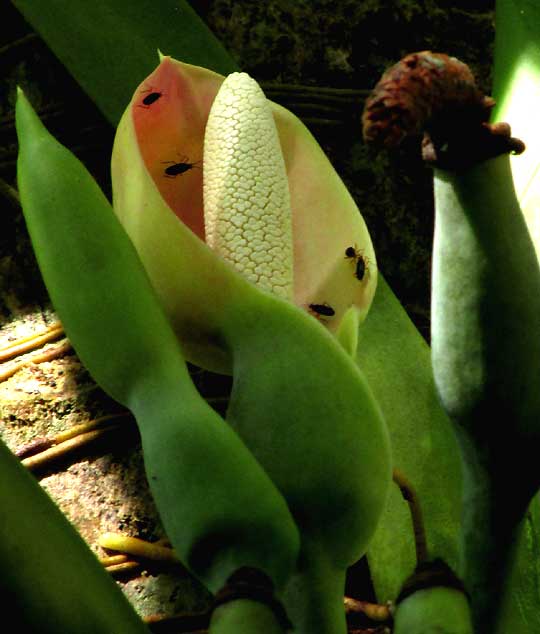Excerpts from Jim Conrad's
Naturalist Newsletter
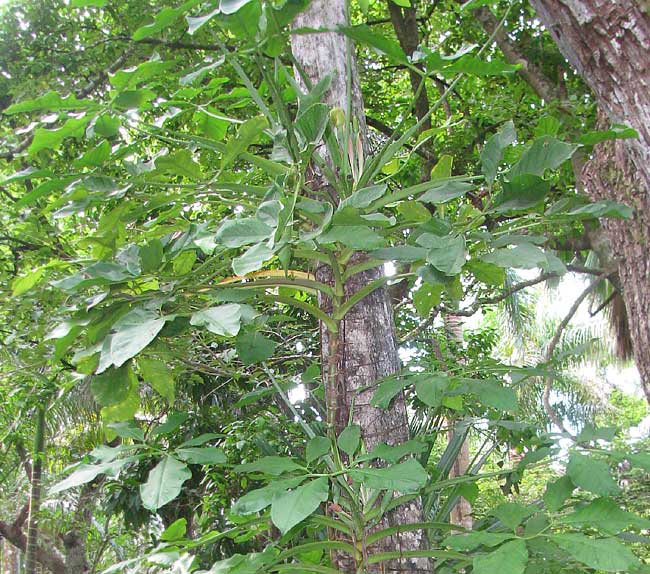
from the December 27, 2009 Newsletter issued from Hacienda Chichen Resort beside Chichén Itzá Ruins, central Yucatán, MÉXICO; limestone bedrock, elevation ~39m (~128ft), ~N20.676°, ~W88.569°
SYNGONIUM VINE
Above you see a tree-climbing aroid occurring here and there in deep shade at Hacienda Chichen. Aroids are members of the Arum Family, the Araceae, the same family as the North's Jack-in-the-pulpit springtime wildflower.
It's SYNGONIUM PODOPHYLLUM, native to southern Mexico to South America. In English often it's called the Arrowhead Vine, a name shared with similar vines, so many just call it Syngonium. You can see a close-up of one of its deeply lobed leaves below:
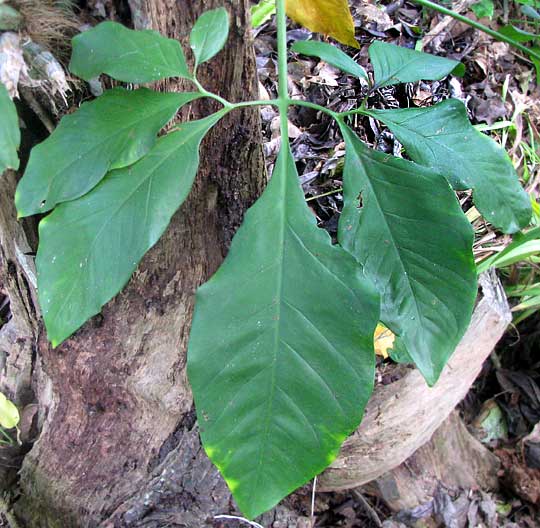
If you're familiar with aroids you know that they produce many tiny flowers on a fingerlike stem (the "spadix", which is Jack in Jack-in-the-pulpit) with a hoodlike modified leaf, or "spathe," usually wrapped around or overtopping the spadix (the pulpit in Jack- in-the-pulpit). Our Syngomiums are flowering now and you can see a cluster of inflorescences below:
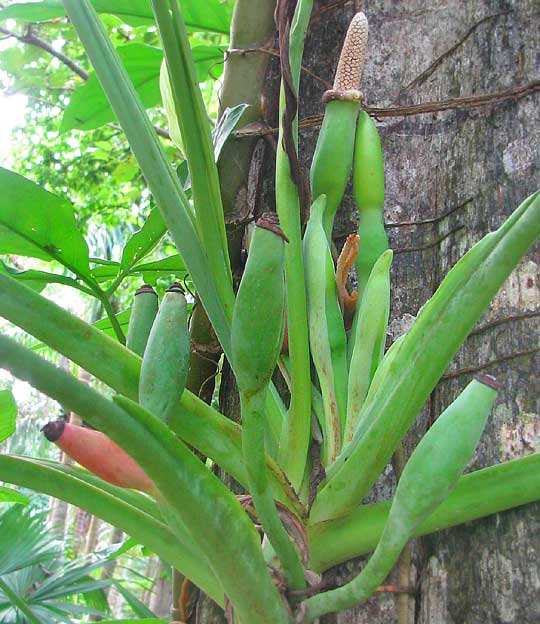
The topmost inflorescence has lost its spathe, revealing the upper part of the spadix and exposing the tops of many male flowers. The female flowers are below the collar-like scar at the base of the male flowers, inside the green, bulging area. The bulging area surrounding the female flowers looks closed, but when the female flowers are receptive an opening develops just large enough for pollinators to enter, then the opening closes.
To the right of the topmost inflorescence is a younger inflorescence still with its spathe attached. Below these you can make out several developing "fruits," all topped with brown, dry scars where both the spathe and that part of the spadix holding the male flowers have fallen off. At the bottom left a "fruit" is turning red. "Fruit" is in quotation marks because, technically, the real fruits are the matured ovaries of the individual female flowers inside the bulging fruitlike things. Turning red like that, it's obviously inviting seed-dispersing fruit-eaters to a snack.
Below, you can see how the stem sprouts aerial roots that attach it to tree bark as it grows:
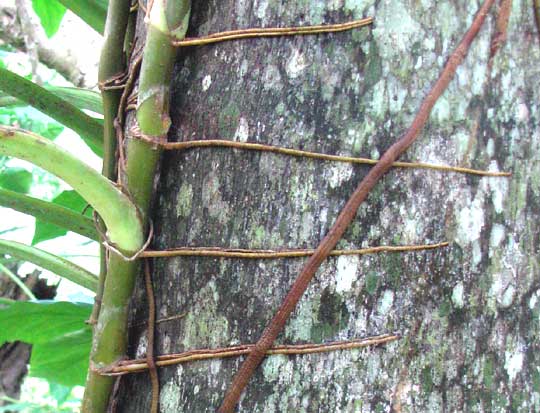
Sometimes Syngonium can't find anything to climb so its stems range across the ground forming a dense groundcover. Leaves on these horizontal stems are smaller and typically have only three lobes or no lobes at all. You can see some three-lobed ones below.
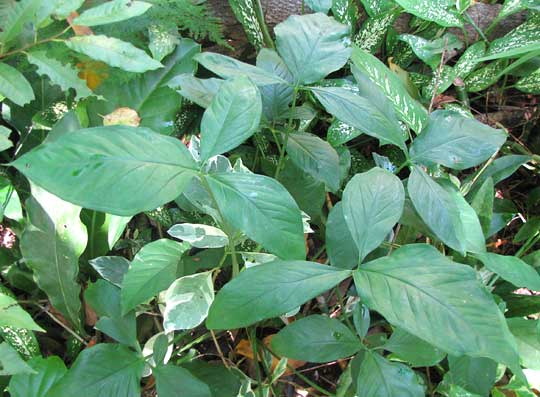
from the December 27, 2015 Newsletter issued from Hacienda Chichen Resort beside Chichén Itzá Ruins, central Yucatán, MÉXICO
SYNGONIUM FLOWERING
Nowadays the Syngonium is flowering, shown below, busy with pollinators at the peak of its receptivity:
